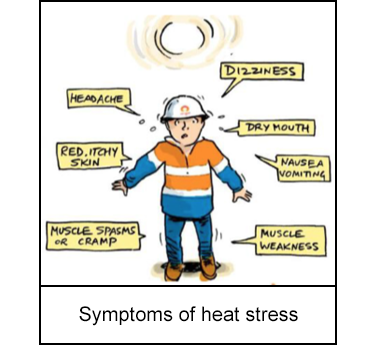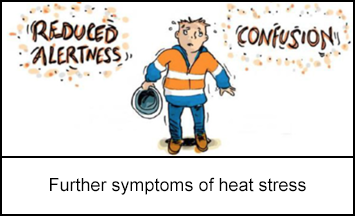-
What happened?
A worker dressed in a wetsuit was conducting in-stream environmental monitoring in a river.
The worker experienced overheating, dehydration, headaches, and was unable to cool down.
A co-worker observed the symptoms of heat stress.
The worker was moved to a shaded area and provided with water.

-
Why did it happen?
Even though the water in the river was cool, the worker still experienced heat stress because they were working in direct sun during the hottest period of the day. The temperature was approximately 38⁰C (100⁰F).
In accordance with the job safety and environmental analysis (JSEA), the worker was wearing a wetsuit as personal protective equipment (PPE) to minimise hypothermia risk and to protect against being scratched by underwater debris. The JSEA had not been adjusted for summer conditions.
The increased heat risk exposure had not been considered. The worker was not familiar with wearing a wetsuit and was not aware that they needed to keep it wet to regulate temperature.
Although the worker had received information about heat stress, they did not stop work when they experienced the first signs. They felt that stopping work would let their team down.

-
What did they learn?
Include adequate controls to avoid heat stress when planning work in hot environments or direct sun. Examples include: conducting activities in cooler periods; providing adequate PPE and water; scheduling appropriate work and rest cycles).
Communicate information about heat stress to all workers (i.e. symptoms; potential consequences; controls).
Steps taken in response to the symptoms of heat stress could have been more effective. Water was provided but it did not contain ice or hydrolite. The worker’s wetsuit was not fully removed as they had no spare clothes. Because the wetsuit was not removed the worker was moved to a shaded instead of an air-conditioned car. The work crew did not seek onsite paramedic advice.

-
Ask yourself or your crew
Do you work in a hot environment or in direct sun? How do you avoid heat stress?
Do you know the symptoms of heat stress? Do you know how to respond if you experience these symptoms?
Has your work crew completed the Safer Together Heat Stress e-learn?

Add to homescreen
Content name
Select existing category:
Content name
New collection
Edit collection
What happened?
A worker dressed in a wetsuit was conducting in-stream environmental monitoring in a river.
The worker experienced overheating, dehydration, headaches, and was unable to cool down.
A co-worker observed the symptoms of heat stress.
The worker was moved to a shaded area and provided with water.

Why did it happen?
Even though the water in the river was cool, the worker still experienced heat stress because they were working in direct sun during the hottest period of the day. The temperature was approximately 38⁰C (100⁰F).
In accordance with the job safety and environmental analysis (JSEA), the worker was wearing a wetsuit as personal protective equipment (PPE) to minimise hypothermia risk and to protect against being scratched by underwater debris. The JSEA had not been adjusted for summer conditions.
The increased heat risk exposure had not been considered. The worker was not familiar with wearing a wetsuit and was not aware that they needed to keep it wet to regulate temperature.
Although the worker had received information about heat stress, they did not stop work when they experienced the first signs. They felt that stopping work would let their team down.

What did they learn?
Include adequate controls to avoid heat stress when planning work in hot environments or direct sun. Examples include: conducting activities in cooler periods; providing adequate PPE and water; scheduling appropriate work and rest cycles).
Communicate information about heat stress to all workers (i.e. symptoms; potential consequences; controls).
Steps taken in response to the symptoms of heat stress could have been more effective. Water was provided but it did not contain ice or hydrolite. The worker’s wetsuit was not fully removed as they had no spare clothes. Because the wetsuit was not removed the worker was moved to a shaded instead of an air-conditioned car. The work crew did not seek onsite paramedic advice.
Ask yourself or your crew
Do you work in a hot environment or in direct sun? How do you avoid heat stress?
Do you know the symptoms of heat stress? Do you know how to respond if you experience these symptoms?
Has your work crew completed the Safer Together Heat Stress e-learn?
A river monitoring worker experienced heat stress while wearing a wetsuit in direct sun during high temperatures. The worker was moved to a shaded area and given water after showing symptoms of overheating.
Original material courtesy of Safer Together (Australia)
To access the PDF and PowerPoint versions, please visit https://www.safertogether.com.au/resources/sharing-library/working-outdoors-learning-event-bulletin












